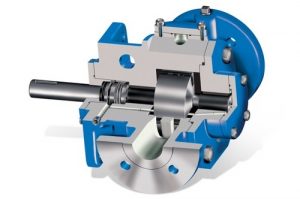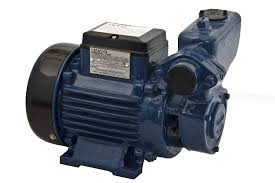Nowadays, life without motor pumps we cannot imagine because they play an essential role in pushing water/liquid from low level to high level, to blow up the bicycle tires otherwise fill gas in your car. So all types of machines from jackhammers to air conditioners, we use pumps to move liquids. The first powered machinery that was invented in the industries was a simple form of motor pump. At present, this was available in a range of types, sizes and used in various applications. This article discusses an overview of what is pump, general types commonly used in process plants, and its applications.
What is Motor Pump?
A Motor pump is a mechanical device, used to move the liquids/gases from one place to another by using mechanical action. The working principle of the water pump is, it converts the motor’s energy from mechanical to fluid flow. These are classified into various types based on the technique they use for supplying the liquid like direct, gravity and displacement.
A pump operates by using a mechanism like rotary or reciprocating and they consume energy for performing mechanical work to move the liquid. Pumps use several energy sources for their operations like manual, wind power, electricity, engines, etc. These are available in many shapes based on its application like medical to large industries.
There different mechanical pumps available in the market to serve in an extensive range of applications like water pumping from wells, filtering of the aquarium, pond, in industries like automobile, energy, medical, etc.
Types of Pumps
Generally, pumps are classified into two main types like dynamic/centrifugal pumps and positive displacement (PD) pumps. Further, these two types are classified into many types.
1). Dynamic Pump
This pump is also known as a centrifugal pump, as it uses centrifugal force for expanding velocity within the fluid being handled, and then the velocity will convert it into pressure. When the pressure is increased then the kinetic energy will be decreased. This difference in pressure will drive the liquid throughout the system.

dynamic-pump
These pumps include a rotary impeller to form a vacuum to move liquid so that it rotates in the pipe and reduces liquid pressure at the inlet. After that, this motion will drive the liquid to the outlet of the pump. These pumps are the most commonly used pumps to transfer low viscosity liquids in the high rate of flow.
The design of this motor pump is frequently associated with the move of water; however, is also a good solution to handle thin fuels as well as chemicals. The benefits of these pumps will make them useful in different applications. The benefits are a simple design, moving parts, less maintenance, etc.
2). Positive Displacement Pump
PD pumps include the plungers, reciprocating movement of pistons otherwise diaphragms for moving the fluid throughout the motor pump. The classification of these pumps can be done based on its operation to move liquid through trapping in a set volume.

positive-displacement-pump
Usually, these pumps are chosen to handle high viscosity liquids at high pressures and flow low because their efficiency will affect by pressure. These pumps handle deviations inflow, viscosity and pressure and these pumps are perfect in dosing applications.
Difference between Pump & Motor
The main differences between pump as well as motor mainly include its definition, types, working, and its applications. The definition of pump is already discussed in above.
Definition of Motor
The motor can be defined as, it is an electromechanical device, and changes the energy from one forms to another like electrical to mechanical. The working principle of each motor may be different but the basic law is same in all the motors. Generally, motors are available into two types like AC motors & DC motors where, AC motors uses alternating current for their functioning and the dc motors uses direct current.

motor
Differences
The differences beween pump & motor are listed below.
Pump | Motor |
| Motor pump is a mechanical device | Motor is an electrical machine |
| The main function of pump is to push the liquid from low level pressure to high level. | The main function of motor is to change the energy from electrical to mechanical. |
| A pump operates with a motor otherwise an engine. | The motor operates with an energy source. |
| A pump moves liquid with the help of forces such as air. These are stimulated using an electric motor to drive a compressor. | Motor works on of Faraday’s law of electromagnetic induction principle |
| Pumps are classified into two types like centrifugal & positive displacement and further these are categorized into different types based on impulse, valve less, gravity, velocity and steam pumps.
| Electrical motors are classified into two types namely AC motors and DC motors. Further there motors are classified into synchronous, asynchronous, brushed and brushless. |
| The applications of pumps mainly involves in industrial and commercial such as paper mills, water treatment plants, car washes, etc | The electrical motors applications are conveyor systems, dishwashers, fans, compressors, robotics, lifts, hoists, electric vehicles, lathes, vacuum cleaners, grinders, shearing machines and more. |
Thus, this is all about motor pump and its types. Both motors as well as pumps play an essential role in the global energy ecosystem and also in the field of engineering for converting energy from electrical to mechanical. Here is a question for you, what is motor pump?